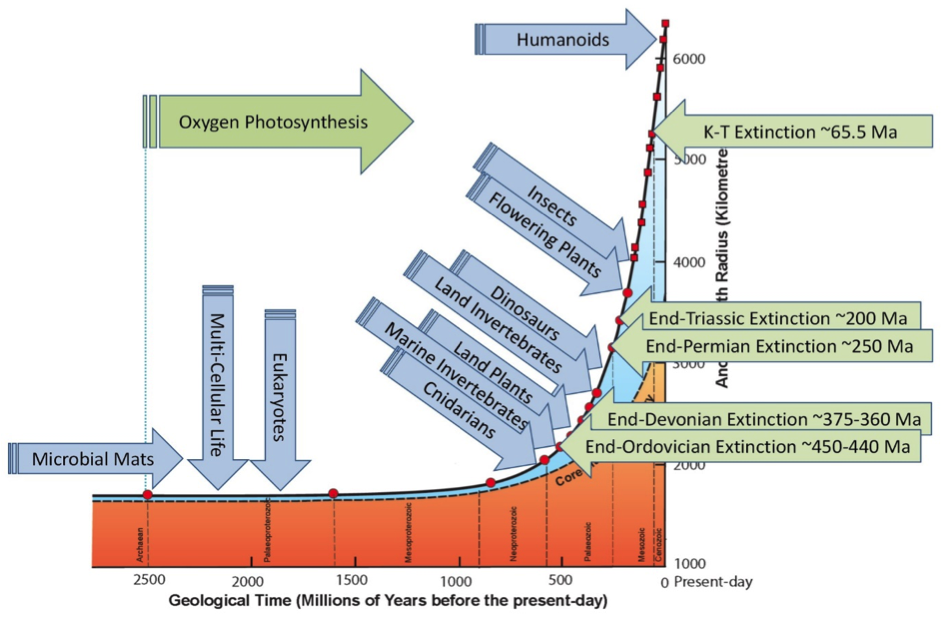
Extinction Events
An extinction event is defined as a widespread and geologically rapid decrease in the amount of life on Earth where geologically rapid refers to events lasting for millions to tens of millions of years. Since life began on Earth, several major extinction events have significantly exceeded the background extinction rate of species. It has been established elsewhere that in the past 540 million years there have been five major events, where over 50 percent of animal species existing at the time have died out (see Figure below).

On Expansion Tectonic small Earth models extinction events primarily occurred during periods of either local or global-scale changes in sea-levels. Prior to the Carboniferous Period—around 360 million years ago—sea-level changes were confined to a network of continental seaways and were the outcome of inter-related changes in Earth radius, surface area, and surface curvature over time. The severity of these changes then increased relatively rapidly during the Carboniferous and Permian Periods as deep geosynclinal activity and orogenesis became increasingly active, forming prominent fold mountain belts and a number of relatively deep seaways. Rupture of the ancient supercontinental crust then came about during late-Permian Pangaean times, which initiated formation of the modern continents and opening of the modern oceans.
Progressive draining of the ancient continental seaways during late-Permian times gave rise to formation of a number of isolated and discrete seas as well as birth of the early modern oceans. On-going break-up of the continental crusts and opening and enlarging of the modern oceans ultimately breached many of the prior land connections, resulting in merging of these separate oceans and seas to form the present-day modern oceans. Breaching and merging of the oceans and seas then resulted in periods of unprecedented sea-level changes occurring over a number of million years, giving rise to catastrophic disruption to both marine and terrestrial species habitats.
The major identified extinction events include the:
| • | End-Ordovician Extinction event lasting from approximately 450 to 440 million years ago.
,
On an Expansion Tectonic Earth this event coincides with disruption of a single pre-existing continental seaway to form a number of discrete seaways.
|
| • | End-Devonian Extinction event lasting from approximately 375 to 360 million years ago.
,
On an Expansion Tectonic Earth this event coincides with increased tectonic activity and disruption to pre-existing continental seaways.
|
| • | End-Permian Extinction event. A series of extinction pulses lasting from approximately 266 to 251 million years ago
,
On an Expansion Tectonic Earth this event coincides with breakup of the ancient Pangaean supercontinent to form the modern continents and draining of the ancient continental seas to form the modern oceans.
|
| • | End-Triassic Extinction event occurring approximately 200 million years ago.
,
On an Expansion Tectonic Earth this event coincides with separation of Australia from North America and merging of the previously separate North and South Pacific Oceans.
|
| • | End-Cretaceous (K-T) Extinction event lasting for approximately 8 million years from about 65.5 million years ago. , On an Expansion Tectonic Earth this event coincided with breaching and separation of Australia from Antarctica and opening of the Southern Ocean. |